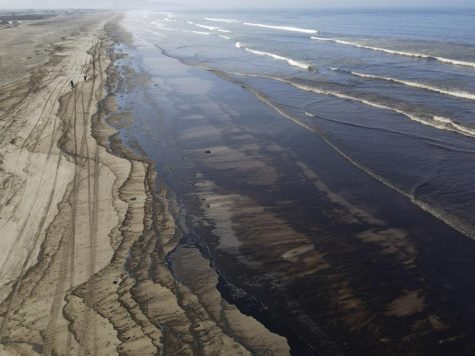Road Salt
Icy roads in heavily wooded areas can take longer to melt than icy roads that have been covered with salt.
The winter season sparks concern about the safety of icy roads among many drivers. Typically, road salt is the first tool used to decrease the slickness of roads. However, people are growing concerned with its effects on the environment and humans. This can be a tough argument because the safety of drivers on icy roads is also very important. This has caused an uprising in the creation of safer substitutes to road salts.
The contamination of water has been a persistent concern for a while now. According to the Columbia Climate School, when large amounts of salt contaminate fresh water, it overpowers the oxygen and can harm aquatic wildlife. Shasten Sherwell, a microbial ecologist stated that, “High sodium levels in drinking water affect people with high blood pressure, and high chloride levels in surface waters are toxic to some fish, bugs, and amphibians.” Salt has also shown that it can eat away at cars and infrastructure. Chipped lead from infrastructure is another contributing factor to the contamination of fresh water.
More alternatives to road salt have been created such as beet juice, sand, even smart snow plows. According to the Missouri Department of Education, beet juice has proven to loosen the properties of road salt. More places such as Michigan and Colorado have been tampering with different mixtures of salt and beet juice. Sand works differently from the average road salt variation, as it relies more on traction. Some places have adapted a mixture that is half salt and half sand.
Locally, the community takes a good effort to prevent danger from icy roads. Even before snow arrives, road salt is applied to roads within the city limits. In regards to newer innovations being made to replace road salt, Mallory Felker, a freshman at FHS, states that, “I would be open to alternative ice melting substances.” Some also claim that living out of town makes it harder to get into town because their roads do not receive salt. The point being argued by these claims is that if we use road salt at all, we might as well use a version of it that will be less harmful to the environment.
There is a popular concern of how effective these alternatives are. The safety of drivers is urgent, but the wellness of the environment is as well. More southern states that do not get a lot of snow often immediately go to salt for their roads, which puts them at risk for more contamination. However, some believe that it is important to implement the newer inventions into more southern states to prevent inflammation in contaminated water. Overall, the recognition of the effects of road salt and the introduction of alternatives seems to be on the uprise.

Hobbies: Art, Reading
Quote: “I’m feeling so tired.” - Mac DeMarco
Theme Song: Space Song by Beach House
Favorite Content Creator: Lindsay...











